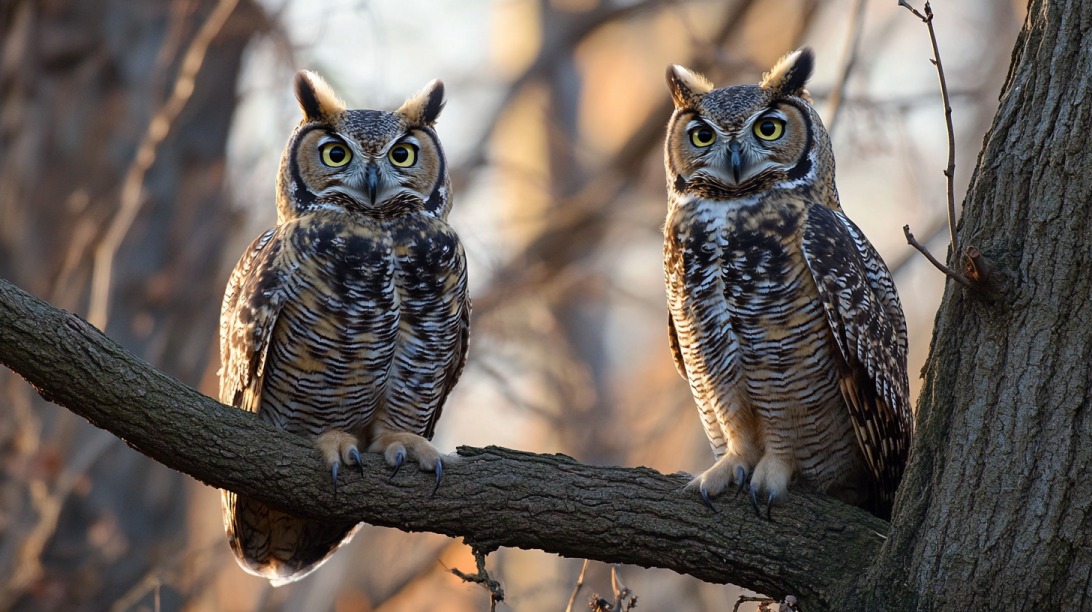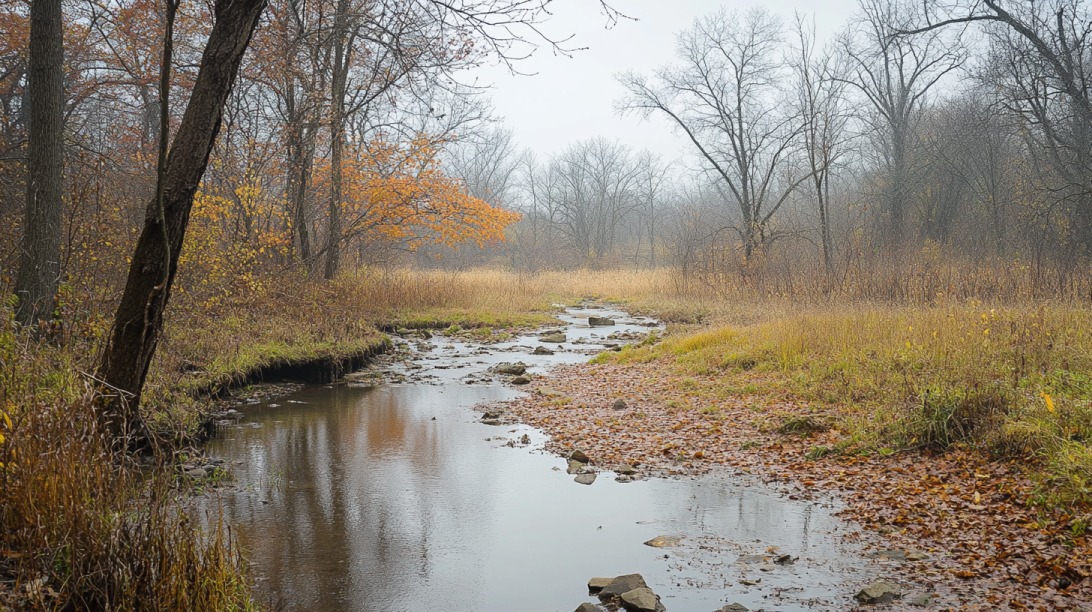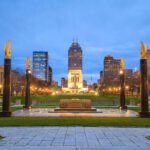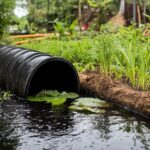Indiana offers an extraordinary experience for wildlife watchers, particularly birding enthusiasts.
With over 400 documented bird species, the state delivers some of the Midwest’s most rewarding sightings. Spanning 64 locations across five distinct regions, the Indiana Birding Trail provides curated access to diverse habitats.
Migration seasons in spring and fall transform areas like Indiana Dunes and Goose Pond Fish & Wildlife Area into hotspots teeming with avian activity.
Let us talk about wildlife watching in the state of Indiana.
Key Birding Regions and Signature Experiences
Birdwatching, as a constructive outdoor activity, across Indiana reveals exceptional biodiversity, thanks to its wide range of habitats, including:
- Wetlands
- Forests
- Grasslands
- River corridors
Each region offers distinct opportunities, drawing both resident and migratory birds.
Whether visitors seek easy-access parks near cities or remote natural preserves, the following areas provide reliable hotspots for spotting rare and colorful species.

Northwest Indiana
Northwest Indiana ranks among the most bird-rich areas in the state, due to its proximity to Lake Michigan and its variety of ecosystems. Sand dunes, wetlands, and open water draw birds in massive numbers, especially during migration.
Spring brings a sky full of raptors and songbirds, while fall offers spectacular crane and pelican movements.
Indiana Dunes State Park and National Park
Indiana Dunes features some of the most productive birding in the Midwest. More than 300 species are documented in the state park alone, with the broader region totaling over 350 species.
The Longshore Tower sees staggering bird traffic in spring, making it a key migration monitoring location.
View this post on Instagram
- Over 250,000 individual birds counted each spring at the Longshore Tower
- Regular sightings of Prothonotary and Prairie Warblers
- Notable rarities: Harris’ Sparrow and Jaeger
- Multiple trails offering dune, forest, and marsh viewing access
Jasper-Pulaski Fish & Wildlife Area
Jasper-Pulaski is unmatched for fall crane watching. Sandhill Cranes use the area as a staging ground, arriving in overwhelming flocks. Observation decks provide perfect views of this awe-inspiring congregation.
- More than 15,000 Sandhill Cranes present daily during peak fall migration
- Elevated viewing platform offers close-range experiences
- Educational signage and seasonal counts enhance visits
Willow Slough Fish & Wildlife Area
Wetlands and open waters make Willow Slough a versatile location for waterbirds and raptors. Its quiet paths allow birders to encounter elusive marsh species with patience.
यो पोस्ट Instagram मा हेर्नुहोस्
- American White Pelican
- Bald Eagle
- Virginia Rail
- Over 250 species documented
Central Indiana
Central Indiana brings together urban convenience with surprisingly dense bird activity. Parks within and around Indianapolis provide critical stopover habitats for migrants and offer abundant amenities for casual or serious birders.
Eagle Creek Park (Indianapolis)
View this post on Instagram
Eagle Creek’s large lake and surrounding woodlands offer a haven to songbirds and waterfowl. Birding platforms and an ornithology center support educational efforts, and events are frequently hosted for both children and adults.
- Nearly 4,000 acres of bird habitat
- Red-breasted Nuthatch and Pine Siskin in winter
- Migrating Ruddy Ducks and Buffleheads on the water
- 270+ species counted annually
Fort Harrison State Park
Known for its quiet woodlands and historic buildings, Fort Harrison is a surprising gem in a major metro area. Trails are well maintained, and tree-lined corridors support colorful orioles and tanagers.
- Baltimore Oriole and Orchard Oriole
- Scarlet Tanager
- Eastern Towhee
- Accessible trail networks throughout the park
Prophetstown State Park
@breckenridgestreetProphetstown State Park. West Lafayette, Indiana.♬ original sound – Andrea
Located at the confluence of two rivers, Prophetstown supports rare grassland and wetland bird species. With reconstructed prairies and a cultural interpretive center, it offers both ecological and historical value.
- Ring-necked Pheasant and Lark Sparrow
- Indigo Bunting brightening the fields
- Overlooks and trails cut through native tallgrass
Southern Indiana Hotspots (Clark & Floyd Counties)
Southern Indiana, particularly in Clark and Floyd Counties, presents forested ridges, floodplains, and riverfronts ideal for bird migration. The area’s position along the Ohio River makes it especially productive during seasonal movements.
Falls of the Ohio State Park
Shorelines and fossil beds draw in birds and birders alike. Spring and fall migrations fill the area with ducks, raptors, and songbirds.
- Bald Eagles
- Warblers in abundance during spring
- Gulls and other water-associated species
- Over 270 bird species recorded
Charlestown State Park
Deep ravines and ridges cut by the Ohio River offer a more rugged birding experience. Quiet trails lead through mature forests known for both day and nocturnal species.
- Prairie Warbler
- Yellow-breasted Chat
- Barred Owl and Pileated Woodpecker
- Panoramic views enhancing visual birding
Deam Lake State Recreation Area
Found within the Clark State Forest, Deam Lake offers access to both woodland and aquatic birding.
- Pine Warbler and Red-breasted Nuthatch
- Occasional winter sightings of Long-tailed Duck
- Well-marked trails across forested terrain
Loop Island Wetlands
A small but dense preserve located near urban New Albany, Loop Island offers easy walking trails and productive marsh habitats.
- Great Egret
- Gray Heron
- Belted Kingfisher
Ideal for casual morning birding sessions
Southwest Indiana
Southwest Indiana features massive wetland restorations and bottomland forests, making it one of the most bird-rich regions in the Midwest. Shallow marshes, grasslands, and riparian corridors support everything from cranes to secretive sparrows.
Goose Pond Fish & Wildlife Area
View this post on Instagram
Recognized nationwide, Goose Pond offers expansive bird habitat. Fall brings festival-goers to celebrate Sandhill Crane migration, and winter birding delivers views of rare raptors.
- Over 260 species recorded
- Whooping Cranes and Short-eared Owls during migration
- Marsh Madness Festival in late fall
- Auto-tour loops for easy access
Patoka River National Wildlife Refuge
Patoka River features an immersive birding experience among wet forests and grasslands. Many areas are still being restored, adding to the variety of habitat available.
- Prothonotary Warbler
- Hooded Merganser in nesting boxes
- Henslow’s Sparrow in tall grass
Trails offering floodplain bird access year-round
Southeast Indiana
Southeast Indiana blends mature woodlands with wetland preserves, offering both nesting habitat and critical migration stopovers. State parks and wildlife refuges in this region feature well-developed trails and observation areas.
Muscatatuck National Wildlife Refuge
Muscatatuck spans a large mosaic of habitats, including swamps, woodlands, and wet meadows. Its designation as a continentally important bird area underscores its importance.
- Kentucky Warbler
- Summer Tanager
- Yellow-billed Cuckoo
Least and American Bittern sightings in wet seasons
O’Bannon Woods State Park
View this post on Instagram
Located along the Ohio River corridor, O’Bannon Woods features ADA-accessible birding trails, making it an excellent destination for birders of all abilities.
- Wood Thrush
- Worm-eating Warbler
- Pileated Woodpecker
Guided hikes during spring birding festivals
Birding Tips for Beginners
Starting out in birding can feel overwhelming, but a few smart choices can make early experiences more rewarding and less frustrating. Indiana offers plenty of opportunities for first-time birders to observe fascinating species, and a bit of preparation helps maximize every outing.
One of the best ways to gain confidence in the field is by using mobile apps specifically designed for birders. These tools are practical for learning on the go and contribute to community science efforts at the same time.
- eBird: Log sightings, explore birding hotspots, and review historical trends by location
- Merlin: Identify birds by photo, sound, or description using a vast database by Cornell Lab
Equipping yourself with the right gear ensures clarity in sightings and comfort during extended hikes. Here are some basic items that make a real difference:
- Binoculars (8×42): Ideal balance between magnification and brightness
- Spotting scope: Useful for open water birding and shorebird viewing
- Field guides: Sibley or Peterson offer excellent illustrations and range maps
- Footwear: Waterproof hiking shoes or boots provide support and grip
- Clothing: Neutral tones and layers help blend into surroundings and manage temperature
Joining a local birding club introduces beginners to seasoned enthusiasts. These communities provide feedback, support, and field experience that accelerates learning. Attending scheduled bird counts and migration events opens access to guided outings and regional experts who share their knowledge generously.
Travel Planning Resources

Planning a birding trip in Indiana doesn’t require complicated logistics. Many of the state’s top birding locations are easily accessible by car, and most have visitor amenities designed to support day trips or overnight stays.
One program stands out for casual and dedicated birders alike—the Indiana State Nature Passport Program. Participants track their visits to designated nature areas and receive rewards for their adventures. The initiative also helps visitors discover lesser-known sites across all five regions.
For those preparing their itinerary, seasonal timing plays a critical role in birding success. Each season brings its own species highlights and behavioral shifts. Here’s a quick seasonal reference to help with scheduling:
- Spring (March–May): Migrant warblers, flycatchers, vireos, and woodland songbirds arrive
- Fall (September–November): Raptors, shorebirds, and cranes dominate sightings
- Winter (December–February): Excellent time for waterfowl, loons, and winter finches
Many parks feature modern trails, restroom facilities, observation towers, and interpretive signage. Nature centers often provide species checklists, educational materials, and occasional guided hikes. Each region includes local tourism offices that offer updated maps and seasonal highlights.
When packing for birding excursions, remember that early mornings often bring cold air and dew-soaked vegetation.
Staying warm, dry, and energized makes a big difference on longer outings.
- Layers of clothing: Lightweight but warm materials that can be adjusted as temperatures rise
- Insect repellent: Essential during spring and summer outings near water or woodland
- Snacks and water: Keeps energy up during remote hikes or long waits at blinds
- Notebook or app: Helps log personal sightings and behaviors not easily tracked online
Smart preparation combined with the natural rhythm of the seasons allows birders to witness memorable moments in Indiana’s thriving wildlife scene.
Summary
Indiana offers unmatched variety for birdwatchers of every experience level. With its expansive trail network, protected wetlands, and seasonal spectacles like Sandhill Crane migrations, each visit brings the possibility of a new discovery.
Locations such as Indiana Dunes, Goose Pond, and Muscatatuck provide consistent sightings and rare moments that keep birders returning.
Regional parks, national wildlife refuges, and organized events support a strong community of enthusiasts who share sightings, lead tours, and contribute to conservation. Migration seasons bring energy and excitement, while quiet winter months highlight stillness and subtle beauty.



